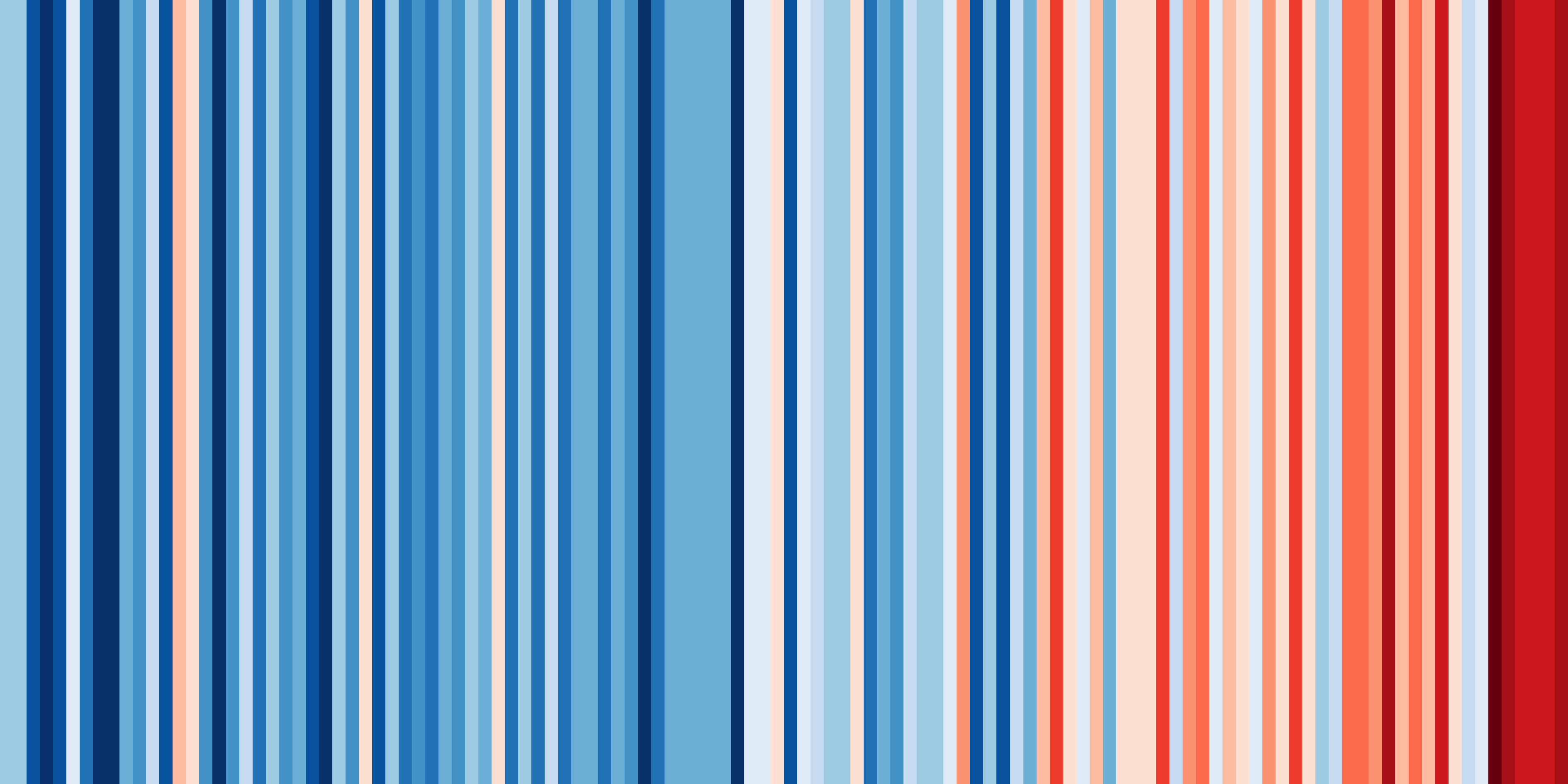Ed Hawkins knows a thing or two about the impact of colour and what we think and feel when we see different colours. He uses colour to communicate. So, is Ed Hawkins an artist?…or a designer? NO – Ed is a U.K. Climate scientist.
In 2018, Ed developed a ‘warming stripes’ graphic which resembles a barcode. He used data from the World Meteorological Organisation dataset. The graphic uses blue stripes for cooler than average years, and red ones for years that were hotter than average. It shows that the earth has warmed significantly since 1850.
He said he ‘wanted to communicate temperature changes in a way that was simple and intuitive, removing all the distractions of standard climate graphics so that the long-term trends and variations in temperature are crystal clear. Our visual system will do the interpretation of the stripes without us even thinking about it.’
He is right. Just take a look at that colour change! Remember, this is not modelling, or prediction – it is recorded, factual data.
On 17 June 2019, Hawkins published for public use, a large set of warming stripes on ShowYourStripes social media. Individualized warming stripe graphics were published for the globe, for most countries, as well as for certain smaller regions such as states in the US or parts of the UK, since different parts of the world are warming more quickly than others.
Called ‘a new symbol for the climate emergency’ by French magazine L’ADN, warming stripes have been applied to neckties, cufflinks, vehicles, and a music festival stage, as well as streetcars and as a municipal mural in Córdoba, Spain. The huge uptake of this simple graphic is triggering a change of attitude and leading to mass action.
There are many great initiatives underway that are aimed at reducing the heat in our climate. Renewable energy, revegetation, and regenerative agriculture practices are all becoming mainstream. What can you do in this busy festive season? Why not start with recycle (but what a waste), move on to recover (that’s really upcycling), regift, repair, reuse, reduce, refuse: but best of all, RETHINK! Rethink your consumption balance between objects and care for the earth.
We need to get this planet ‘back in the blue’!

